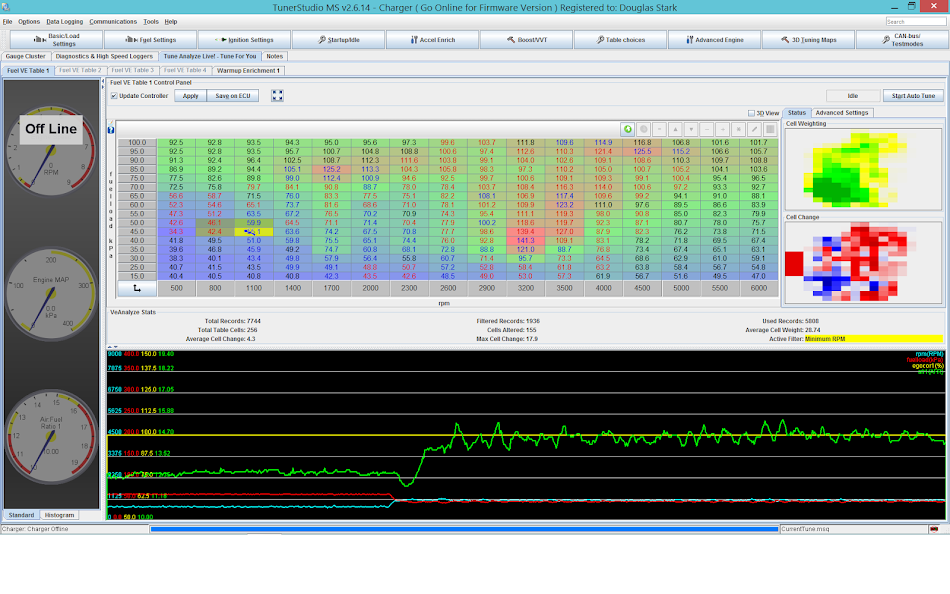kb67mopar
Well-Known Member
For any of you EFI-knowledgeable people following this thread:
Does anyone know if a stepper motor-type IAC valve should completely seal when it is completely closed according to the computer?
I have verified that it is fully extended and the pintle is up against the machined surface in the throttle body, but there is still vacuum there. The pintle and bore are clean. It just looks like they don't entirely match up. It's a very small leak- idle doesn't change at all if you plug it with a finger, but it does suck your finger in. At this point, it doesn't seem to be an issue, but I've Googled myself half to death over this and haven't found an answer.
For anyone else interested, the car has been quite reliable under EFI. Tuning is progressing, but I think the base map was pretty far from ideal for this motor. The initial map was so rich, I think it ruined some plugs. I need to get a new set in there. Cold starts are still an issue, but it runs great at temperature. The logging feature on the computer has been somewhat useful, but the auto-tune feature has really been the best bet. Hopefully I can get the tune sorted a bit better and move on to computer controlled ignition.
I am not sure but I don't think it's supposed to be a positive seal. I would say since you don't need the IAC to be capable of snuffing out the engine and the throttle blades seal off, that there should always be some flow.

















